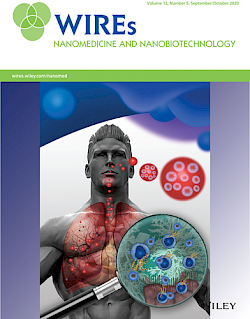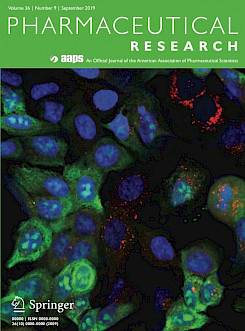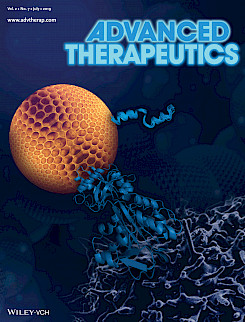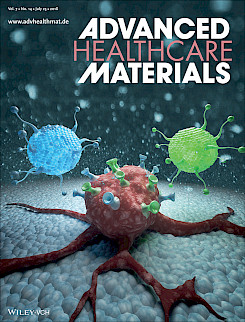Cover Stories
|
Molecular Pharmaceutics May 2024 |
The cover image is based on the Research Article "Closing the Gap between Experiment and Simulation─A Holistic Study on the Complexation of Small Interfering RNAs with Polyethylenimine" by Jonas Binder, Joshua Winkeljann, Katharina Steinegger, Lara Trnovec, Daria Orekhova, Jonas Zähringer, Andreas Hörner, Valentin Fell, Philip Tinnefeld, Benjamin Winkeljann*, Wolfgang Frieß, and Olivia M. Merkel. https://pubs.acs.org/doi/10.1021/acs.molpharmaceut.3c00747. |
|
WIREs Nanomedicine and Nanobiotechnology Sept/Oct 2020 |
The cover image is based on the Focus Article "T-cell targeted pulmonary siRNA delivery for the treatment of asthma" by Tobias W. M. Keil, Domizia Baldassi and Olivia M. Merkel. https://doi.org/10.1002/wnan.1634. |
|
Pharmaceutical Research September 2019 |
KRAS is the most frequently mutated gene in human cancers. Despite its direct involvement in malignancy and intensive effort, direct inhibition of KRAS via pharmacological inhibitors has been challenging. RNAi induced knockdown using siRNAs against mutant KRAS alleles offers a promising tool for selective therapeutic silencing in KRAS-mutant lung cancers. However, the major bottleneck for clinical translation is the lack of efficient biocompatible siRNA carrier systems. Here, Mehta et al. describe siRNA loaded bovine serum albumin nanoparticles for therapeutic downregulation of mutated KRAS. |
|
Advanced Therapeutics July 2019 |
T cells are notoriously difficult to transfect. In article number 1900047, Olivia M. Merkel and co‐workers describe a polymeric nanoparticle system for siRNA delivery that is decorated with transferrin, which interacts with the transferrin receptor found upregulated on activated T cells and with pH‐responsively protected melittin, which mediates endosomal escape upon deprotection in the acidic environment of the endo‐lysosome for efficient gene silencing in T cells. |
|
Advanced Healthcare Materials July 2018 |
In the promising field of targeted nanomedicine, the upregulation of mannose and mannose‐6‐phosphate receptors expression on the surface of several aggressive tumors not only allows the selective delivery of chemotherapeutics, but pave the way for many other additional applications in cancer treatment such as immunotherapy and cancer prognosis. In article 1701398, a progress report by Olivia M. Merkel and co‐workers highlights the latest advances in this area of targeted drug delivery. Image by Christoph Hohmann, Nanosystems Initiative Munich (NIM). |
|
Bioconjugate Chemistry January 2012 |
Pulmonary delivery provides an easy means of access for the administration of therapeutic genes to both the pulmonary epithelium and the systemic circulation. The review by Merkel et al. (see page 3) highlights biologic barriers that have to be overcome in the lung, such as recognition by macrophages, interaction with airway fluids, and many others. It also discusses recent advances in nonviral gene delivery to the lung. Cover art by Klaus Keim and Mengyao Zheng. View the article. |





